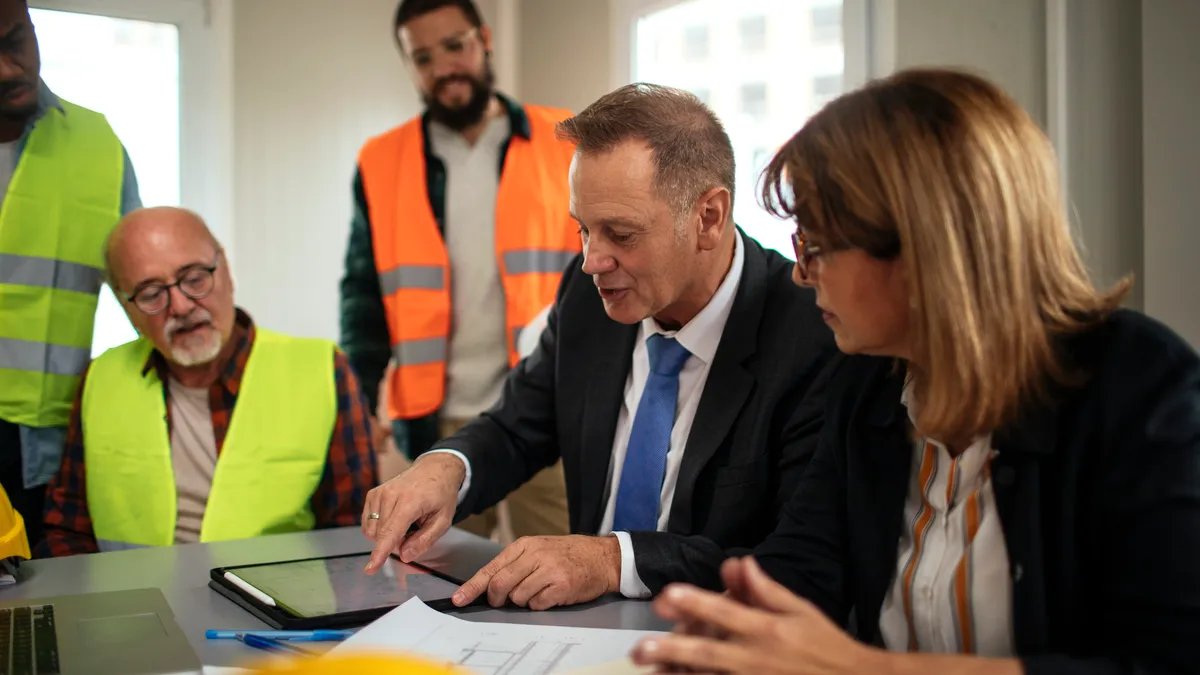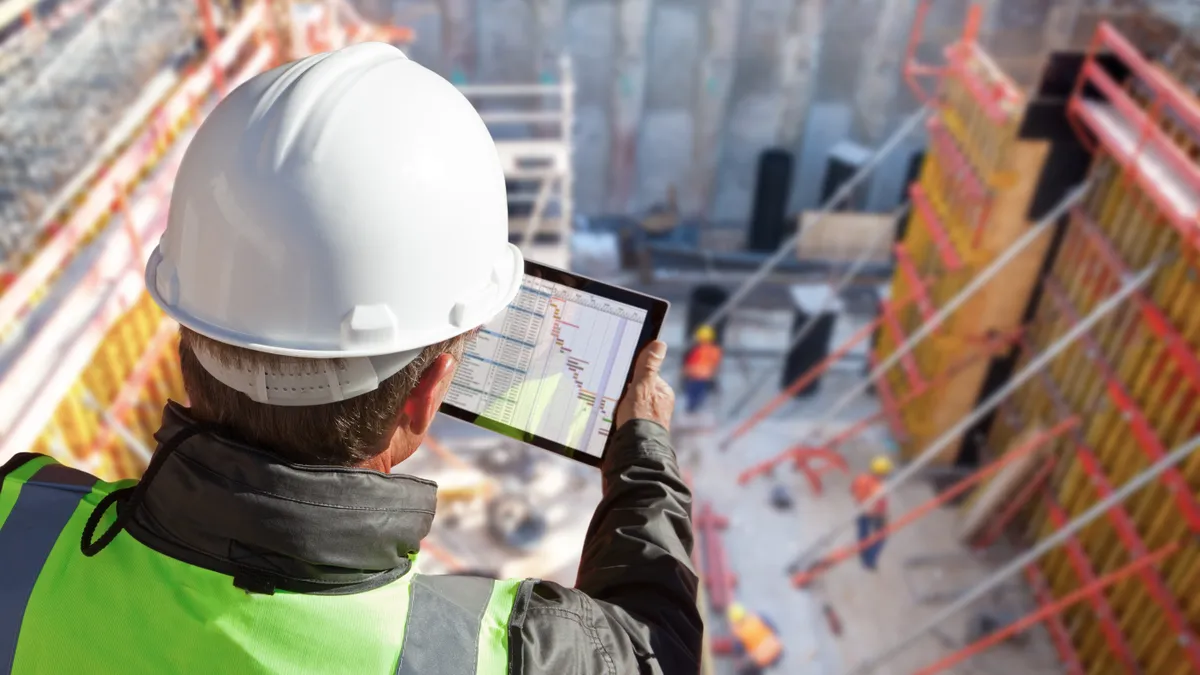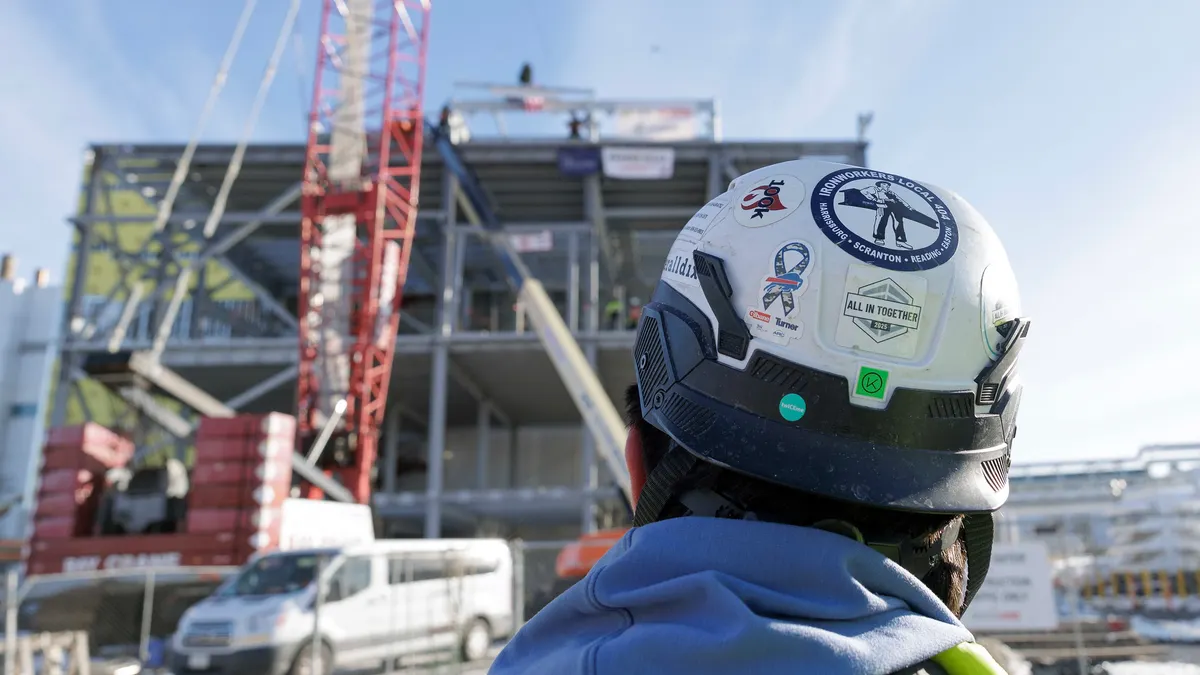Brian Kassalen is a principal and the construction industry leader with Baker Tilly, a Chicago-based advisory, tax and assurance firm. Opinions are the author’s own.
As inflation, labor and tariffs continue to pressure the construction industry, contractors are looking for opportunities to protect profit margins. Artificial intelligence offers builders new ways to remain competitive and profitable before projects even start.
Project estimates and AI
Construction is an industry where most of the work is awarded to low-bid contracts, so any tool that helps a contractor’s success on project estimation through project completion is extremely valuable. That’s where AI comes in.
AI can significantly improve the accuracy of bid development by using algorithms to estimate potential costs based on data gathered from a wide range of sources — past bids, supply chain databases, market data and publicly available contract records.

When prompted correctly, AI reduces the risk of human error and accelerates the estimation process, and analyzes key pricing and project variables in seconds instead of days.
The right data
While AI’s role in construction is relatively new to construction contract creation, a phrase dating back to the early days of computing remains true: “garbage in, garbage out.”
It’s critical for contractors to understand that the quality of the data that AI uses determines the usefulness of its output. If the data is flawed, inaccurate or biased, AI’s output will also be flawed or incomplete.
For example, if a contractor is developing a competitive bid for a construction project, they typically consider the cost of raw materials, subcontractors, labor and equipment and could spend days — even weeks — reviewing documents and manually compiling information. These sources of data could be from within the company itself or external.
AI can also use design data directly from building information modeling platforms. Instead of relying on static spreadsheets or manual quantity takeoffs, AI systems can read BIM models to identify specific materials, quantities and construction elements, then apply intelligent cost-mapping to each unit. This integration lets estimators adjust pricing in real time as design changes occur, supporting more flexible and responsive budgeting.
AI doesn't replace BIM — it works alongside it, turning raw model data into actionable, cost-specific insights during the design and preconstruction phases.
That level of precision becomes especially important once a contractor's bid is accepted and pricing is locked in, unless change orders are approved. If an estimate is off, it can shrink profit margins or turn the project into a financial loss.
By using predictive analytics, AI can flag and quantify potential risks early, including market volatility, labor shortages or scope gaps. These insights can be built into unit cost estimates to create more resilient bids and help avoid costly surprises down the line.
Negotiation
AI can also be used in negotiation, especially for addressing potential issues proactively, allowing justification for particular mark-ups in a contract. In addition, if unforeseen changes cause delays or additional costs after the contract is signed, AI may be helpful in finding common ground between two negotiating parties.
For example, instead of submitting incomplete or delayed change orders, contractors can use AI to produce faster, data-driven justifications for both scope and cost adjustments. This can lead to more timely approvals from project owners and reduce disputes during final cost reconciliation.
With better data upfront, contractors are less likely to face disagreements later over what the change was worth.
Security
Contractors also need to be cognizant of privacy and security when using AI to develop bids. A closed, proprietary AI system can help prevent external disclosure of estimates, bids and sensitive information.
On the other hand, if contractors use open-source AI to develop bids, they risk exposing this information to the competition, losing user trust and potentially violating data protection regulations.
At a minimum, contractors need to evaluate their hardware, software, licenses and security controls to ensure a safe environment for AI deployment and use.
Where to begin
With the industry changing so quickly, many contractors are at a loss where to start their AI integration journey. Some companies are “all-in,” while others are in a “wait-and-see” approach.
For those contractors on the fence, the first step is to recognize the need for change and begin to have exploratory conversations about how AI can be integrated into the bidding process and other aspects of construction. A third party that is experienced in AI integration can help a contractor develop an AI strategy to help with the bidding and negotiation process.
As with all AI, human oversight will remain necessary in the bidding and negotiation process. The technology may save thousands of manual work hours and improve accuracy, allowing the workforce to use their time on more strategic tasks.
Contractors also need to recognize that AI integration into construction bidding is more than a one-time event. By its very nature, the use of AI by contractors is still evolving.





















